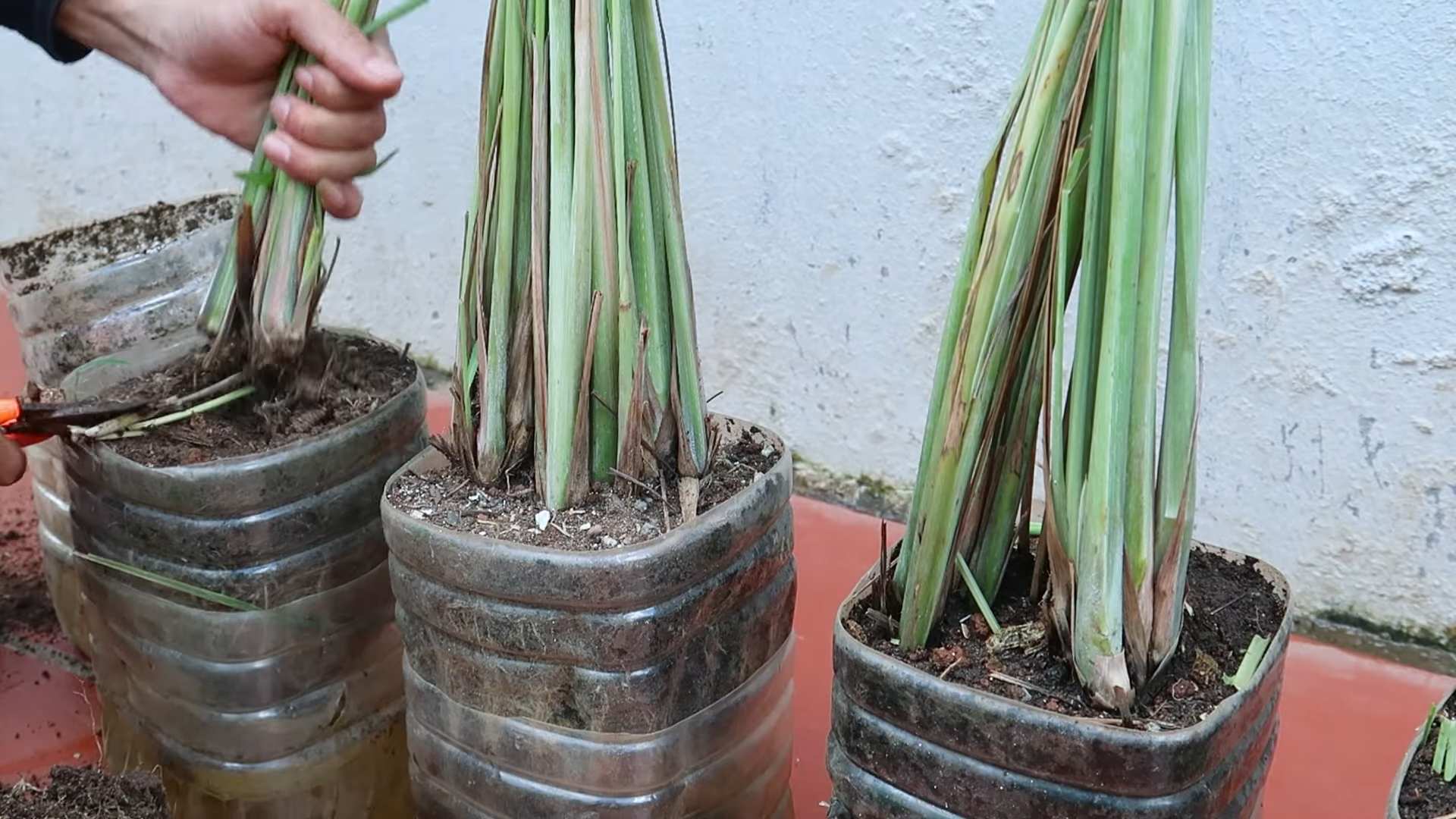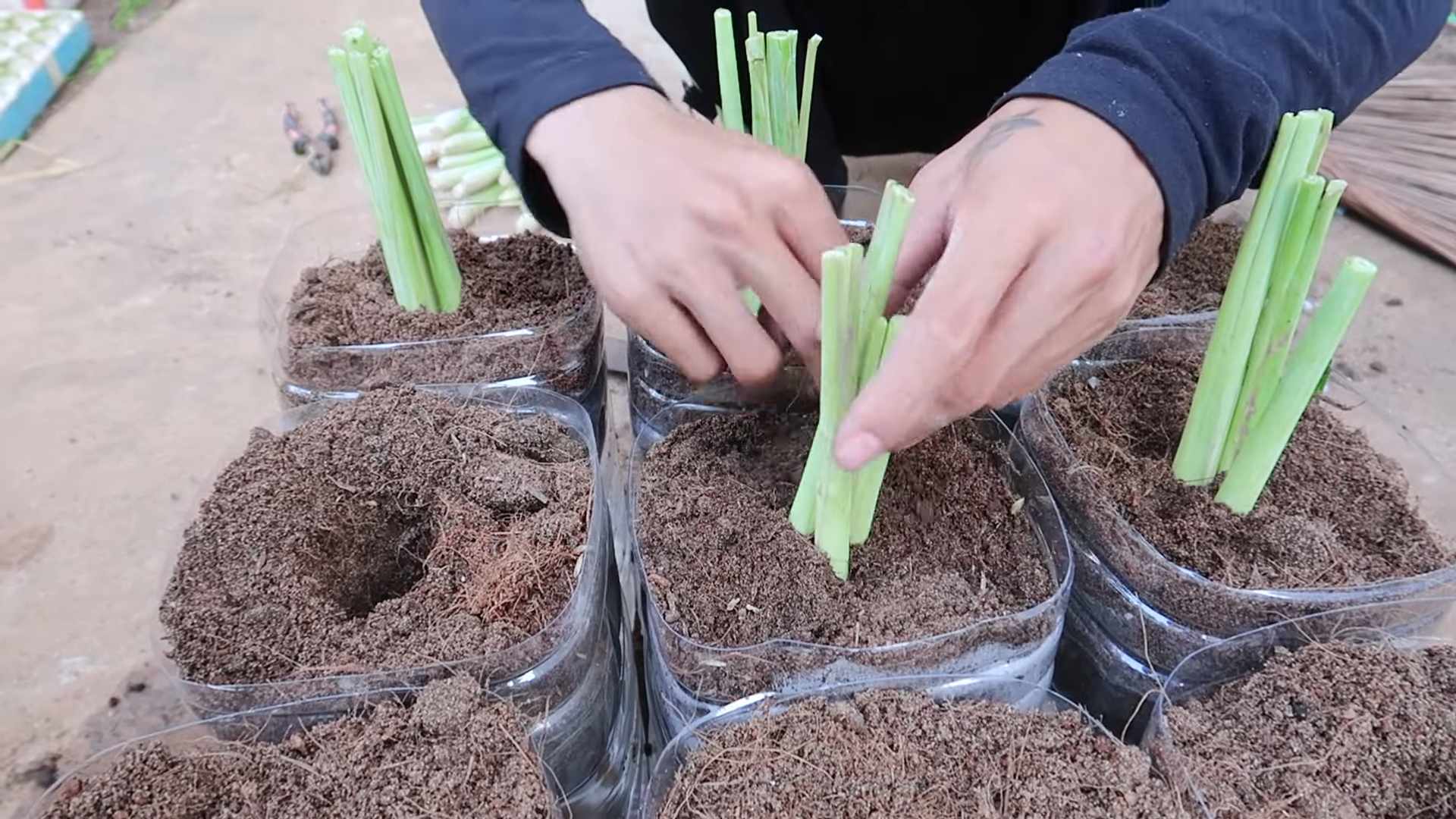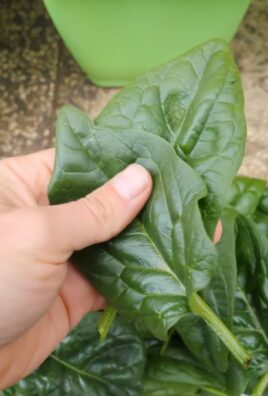Growing Lemongrass at Home might seem like a tropical dream reserved for expert gardeners, but I’m here to tell you it’s surprisingly achievable, even if you’re a complete beginner! Forget expensive grocery store runs for that vibrant, citrusy flavor – imagine stepping into your own backyard (or even just your sunny windowsill!) to harvest fresh lemongrass whenever you need it.
Lemongrass, with its origins deeply rooted in Southeast Asian cuisine and traditional medicine, has been cherished for centuries. From fragrant Thai curries to soothing herbal teas, its versatility is undeniable. Historically, it’s been used not only for its culinary properties but also for its medicinal benefits, believed to possess anti-inflammatory and digestive properties.
But why should *you* bother learning how to grow lemongrass at home? Well, beyond the sheer convenience and cost savings, it’s about embracing a more sustainable lifestyle. Think about reducing your carbon footprint by avoiding imported produce and enjoying the satisfaction of nurturing your own food source. Plus, let’s be honest, there’s something incredibly rewarding about watching a tiny seedling transform into a thriving plant. This DIY guide will provide you with simple, effective tricks and hacks to successfully growing lemongrass at home, regardless of your gardening experience. I’ll walk you through everything from choosing the right variety to troubleshooting common problems, ensuring you have a bountiful harvest of this fragrant herb in no time!

Growing Lemongrass at Home: A Beginner’s Guide
Hey there, fellow plant enthusiasts! Ever dreamt of having fresh, fragrant lemongrass right at your fingertips? Well, dream no more! Growing lemongrass at home is surprisingly easy, and I’m here to guide you through the whole process. Trust me, once you’ve tasted homemade lemongrass tea or added it to your favorite Asian-inspired dishes, you’ll never want to be without it.
Why Grow Lemongrass?
Before we dive in, let’s talk about why you should even bother growing lemongrass. Besides the obvious culinary benefits, lemongrass is also incredibly fragrant and can act as a natural mosquito repellent. Plus, it’s a beautiful, ornamental grass that adds a touch of the tropics to any garden or windowsill.
Choosing Your Lemongrass
There are two main ways to get started with lemongrass: from seed or from stalks purchased at the grocery store. While growing from seed is possible, it takes longer and can be a bit more challenging. I highly recommend starting with stalks, especially if you’re a beginner.
* Grocery Store Stalks: Look for healthy-looking stalks that are firm and green, with a bulbous base. Avoid stalks that are dry, brown, or mushy.
* Nursery Plants: If you can find lemongrass plants at your local nursery, that’s even better! You’ll have a head start, and the plants are usually healthier and more established.
Getting Started: Rooting Lemongrass Stalks
This is the most crucial step, and it’s surprisingly simple. We’re going to coax those stalks into growing roots!
1. Prepare the Stalks: Trim the top of the lemongrass stalks, leaving about 4-5 inches of green. This helps the plant focus its energy on root development. Remove any dry or brown outer leaves, exposing the fresh, green layers underneath.
2. Water Propagation: Place the trimmed stalks in a glass or jar filled with about 1-2 inches of water. Make sure the base of the stalks is submerged, but the leaves are above the water line.
3. Location, Location, Location: Place the jar in a bright, sunny spot. A windowsill that gets plenty of sunlight is ideal.
4. Water Changes: Change the water every 1-2 days to keep it fresh and prevent bacteria growth. This is important for healthy root development.
5. Patience is Key: Within a week or two, you should start to see small roots emerging from the base of the stalks. Be patient! It may take longer depending on the variety and the conditions. Wait until the roots are at least 1-2 inches long before planting.
Planting Your Rooted Lemongrass
Once your lemongrass stalks have developed healthy roots, it’s time to plant them in soil!
1. Choose the Right Pot (or Garden Spot): Lemongrass needs plenty of space to grow. If you’re planting in a pot, choose one that’s at least 12 inches in diameter. If you’re planting in the garden, make sure to give each plant at least 2 feet of space.
2. Soil Matters: Lemongrass prefers well-draining soil that’s rich in organic matter. A good potting mix or a mixture of garden soil, compost, and perlite will work well.
3. Planting Time: Dig a hole in the soil that’s large enough to accommodate the roots. Gently place the lemongrass stalk in the hole, making sure the roots are spread out. Backfill the hole with soil, and gently pat it down.
4. Water Thoroughly: After planting, water the lemongrass thoroughly. This will help settle the soil and encourage root growth.
Caring for Your Lemongrass
Now that your lemongrass is planted, it’s time to learn how to care for it. Luckily, lemongrass is relatively low-maintenance.
1. Sunlight is Essential: Lemongrass needs at least 6 hours of sunlight per day. If you’re growing it indoors, place it in the sunniest spot you can find. If you’re growing it outdoors, choose a location that gets full sun.
2. Watering Wisely: Lemongrass likes to be kept moist, but not soggy. Water it regularly, especially during hot, dry weather. Check the soil moisture by sticking your finger into the soil. If the top inch feels dry, it’s time to water.
3. Fertilizing for Growth: Feed your lemongrass with a balanced fertilizer every 2-3 weeks during the growing season (spring and summer). This will help it grow strong and healthy.
4. Pruning for Bushiness: To encourage bushier growth, you can trim the tips of the leaves regularly. This will also help prevent the plant from getting too leggy.
5. Overwintering (for colder climates): If you live in a colder climate, you’ll need to bring your lemongrass indoors during the winter. Before the first frost, dig up the plant (if it’s in the ground) and pot it in a large container. Place it in a sunny spot indoors and water it sparingly. You can also take cuttings and root them indoors to ensure you have lemongrass for the following year.
Harvesting Your Lemongrass
The best part! Harvesting your own homegrown lemongrass.
1. When to Harvest: You can start harvesting lemongrass when the stalks are at least 1/2 inch in diameter and about 12 inches tall.
2. How to Harvest: Use a sharp knife to cut the stalks near the base of the plant. You can harvest individual stalks as needed, or you can harvest the entire plant at once.
3. Using Your Harvest: Lemongrass can be used fresh, dried, or frozen. To use it fresh, simply chop it up and add it to your favorite dishes. To dry it, spread the stalks out on a tray and let them air dry for several days. To freeze it, chop it up and store it in a freezer bag.
Troubleshooting
Even with the best care, you might encounter a few problems along the way. Here are some common issues and how to fix them:
* Yellowing Leaves: This could be a sign of overwatering, underwatering, or nutrient deficiency. Check the soil moisture and adjust your watering accordingly. If the soil is dry, water more often. If the soil is soggy, water less often. You can also try fertilizing the plant with a balanced fertilizer.
* Brown Leaf Tips: This is often caused by dry air or lack of humidity. Mist the plant regularly with water, or place a tray of water near the plant to increase humidity.
* Pests: Lemongrass is relatively pest-resistant, but it can occasionally be attacked by aphids or spider mites. If you see any pests, spray the plant with insecticidal soap.
Propagating Lemongrass
Want more lemongrass? Propagating is easy!
* Division: The easiest way to propagate lemongrass is by division. Simply dig up the plant and divide it into smaller clumps. Each clump should have several stalks and a healthy root system. Plant the clumps in separate pots or in the garden.
* Cuttings: You can also propagate lemongrass from cuttings. Take a cutting from a healthy stalk, making sure it has at least one node (the point where a leaf grows). Place the cutting in water, and wait for roots to develop. Once the roots are 1-2 inches long, plant the cutting in soil.
Creative Uses for Lemongrass
Beyond cooking, lemongrass has many other uses!
* Lemongrass Tea: Steep fresh or dried lemongrass in hot water for a refreshing and healthy tea.
* Natural Mosquito Repellent: Crush lemongrass leaves and rub them on your skin to repel mosquitoes. You can also plant lemongrass around your patio or deck to create a mosquito-free zone.
* Aromatic Bath: Add lemongrass leaves to your bathwater for a relaxing and fragrant soak.
* Potpourri: Dry lemongrass leaves and add them to potpourri for a refreshing scent.
Final Thoughts
Growing lemongrass at home is a rewarding experience. With a little bit of care and attention, you can enjoy fresh, fragrant lemongrass all year round. So, what are you waiting for? Get started today and enjoy the many benefits of this amazing plant! I hope this guide has been helpful, and happy growing!

Conclusion
So, there you have it! Growing lemongrass at home is not only achievable, but it’s also incredibly rewarding. Imagine stepping into your kitchen and snipping fresh, fragrant lemongrass stalks whenever a recipe calls for it. No more trips to specialty stores or settling for dried, less flavorful alternatives. This DIY trick transforms your culinary experience, bringing a vibrant, citrusy zest to your dishes that you simply can’t replicate any other way.
The benefits extend beyond just convenience and flavor. You’re also reducing your carbon footprint by avoiding the transportation and packaging associated with store-bought lemongrass. Plus, you have complete control over the growing process, ensuring that your lemongrass is free from harmful pesticides and chemicals. It’s a win-win for your taste buds and the environment!
Why is this a must-try? Because it empowers you to cultivate a key ingredient right in your own space, adding a touch of freshness and authenticity to your cooking. Think of the possibilities: fragrant Thai curries, refreshing lemongrass tea, aromatic soups, and even homemade insect repellent. The versatility of homegrown lemongrass is truly remarkable.
Consider these variations to personalize your lemongrass growing journey:
* Container Gardening: If you have limited space, growing lemongrass in pots is an excellent option. Choose a large container with good drainage and use a well-draining potting mix. This allows you to move your lemongrass indoors during colder months.
* Different Varieties: While the common *Cymbopogon citratus* is widely used for culinary purposes, explore other lemongrass varieties like *Cymbopogon flexuosus*, which is often used for essential oil extraction.
* Companion Planting: Plant lemongrass alongside herbs like basil and mint to create a fragrant and beneficial garden ecosystem. These herbs can help deter pests and enhance the overall health of your lemongrass.
* Hydroponics: For the adventurous gardener, consider growing lemongrass hydroponically. This method involves growing plants without soil, using nutrient-rich water solutions. It can be a fun and efficient way to cultivate lemongrass indoors.
We’ve provided you with the knowledge and the inspiration; now it’s time to take the plunge! Don’t be intimidated by the prospect of growing your own lemongrass. It’s a surprisingly easy and forgiving plant to cultivate. Start with a few stalks from the grocery store or a local nursery, follow our simple steps, and watch your lemongrass thrive.
We are confident that you’ll be amazed by the results. The satisfaction of harvesting your own fresh lemongrass is unparalleled. So, grab your gardening gloves, prepare your soil (or container), and embark on this exciting culinary adventure.
We can’t wait to hear about your experiences! Share your lemongrass growing journey with us in the comments below. Tell us about your successes, your challenges, and your favorite ways to use your homegrown lemongrass. Let’s create a community of lemongrass enthusiasts and inspire others to embrace the joy of DIY gardening. Happy growing! Let us know if you have any questions about **growing lemongrass at home**.
Frequently Asked Questions (FAQ)
1. What is the best time of year to start growing lemongrass?
The best time to start growing lemongrass is in the spring or early summer, after the last frost. This allows the plant to establish itself during the warmer months and develop a strong root system before the onset of winter. However, if you live in a region with mild winters, you can start growing lemongrass at any time of the year. If you are starting from seed, it’s best to start them indoors 6-8 weeks before the last expected frost.
2. How much sunlight does lemongrass need?
Lemongrass thrives in full sun, requiring at least 6-8 hours of direct sunlight per day. Insufficient sunlight can lead to stunted growth and reduced flavor. If you are growing lemongrass indoors, place it near a sunny window or supplement with artificial grow lights. Rotate the plant regularly to ensure even exposure to sunlight.
3. What type of soil is best for growing lemongrass?
Lemongrass prefers well-draining soil that is rich in organic matter. A slightly acidic to neutral pH (6.0-7.0) is ideal. Amend heavy clay soils with compost, peat moss, or other organic materials to improve drainage and aeration. You can also use a commercially available potting mix specifically formulated for herbs or vegetables.
4. How often should I water my lemongrass plant?
Lemongrass needs consistent moisture, especially during the growing season. Water deeply whenever the top inch of soil feels dry to the touch. Avoid overwatering, as this can lead to root rot. Reduce watering frequency during the winter months when the plant is dormant. If growing in a container, ensure that the pot has adequate drainage holes to prevent waterlogging.
5. How do I harvest lemongrass?
To harvest lemongrass, use a sharp knife to cut the stalks near the base of the plant, about 1-2 inches above the soil line. Select the thicker, more mature stalks first. You can harvest lemongrass throughout the growing season as needed. After harvesting, remove the outer, tougher leaves and use the tender inner core in your recipes.
6. Can I grow lemongrass indoors?
Yes, lemongrass can be successfully grown indoors, especially in colder climates where it cannot survive outdoors year-round. Choose a large pot with good drainage and use a well-draining potting mix. Place the plant near a sunny window or supplement with artificial grow lights. Ensure that the plant receives adequate moisture and humidity.
7. How do I propagate lemongrass?
Lemongrass can be propagated from seed, division, or cuttings. The easiest method is to divide established clumps of lemongrass in the spring. Carefully separate the clumps into smaller sections, ensuring that each section has healthy roots and shoots. Plant the divisions in individual pots or directly into the garden. You can also propagate lemongrass from cuttings by placing the stalks in water until roots develop, then transplanting them into soil.
8. What are some common pests and diseases that affect lemongrass?
Lemongrass is generally resistant to pests and diseases, but it can occasionally be affected by aphids, spider mites, or fungal diseases. Inspect your plants regularly for signs of infestation or disease. Treat infestations with insecticidal soap or neem oil. Prevent fungal diseases by ensuring good air circulation and avoiding overwatering.
9. How do I overwinter lemongrass in cold climates?
In cold climates, lemongrass is not winter hardy and needs to be protected from frost. You can either dig up the plant and pot it up to bring indoors, or you can take cuttings and root them indoors over the winter. If bringing the whole plant indoors, place it in a cool, bright location and reduce watering frequency. If taking cuttings, follow the propagation method described above.
10. What are some uses for lemongrass besides cooking?
Lemongrass has a variety of uses beyond culinary applications. It can be used to make herbal teas, essential oils, and natural insect repellents. The fragrant leaves can be added to potpourri or used to freshen up your home. Lemongrass essential oil is known for its antiseptic, antibacterial, and antifungal properties. It is also used in aromatherapy to relieve stress and anxiety.





Leave a Comment